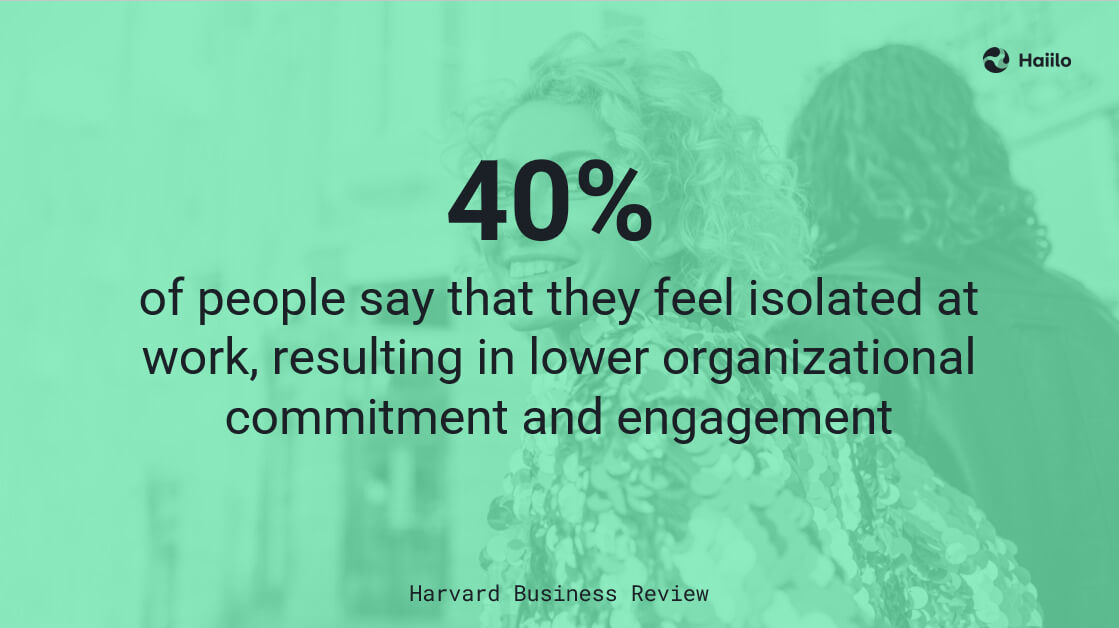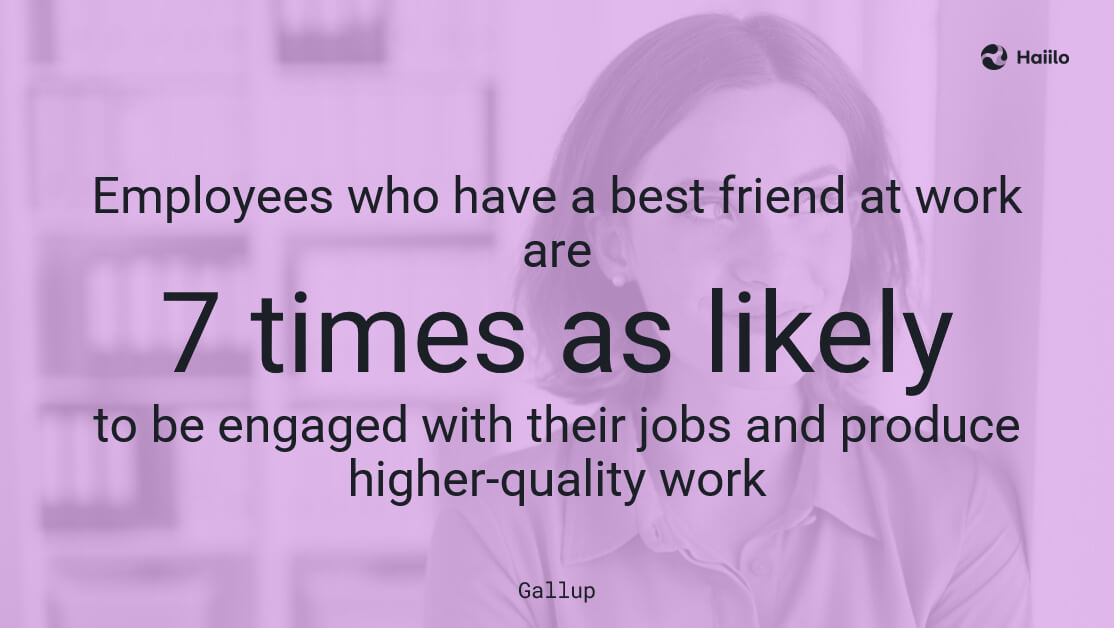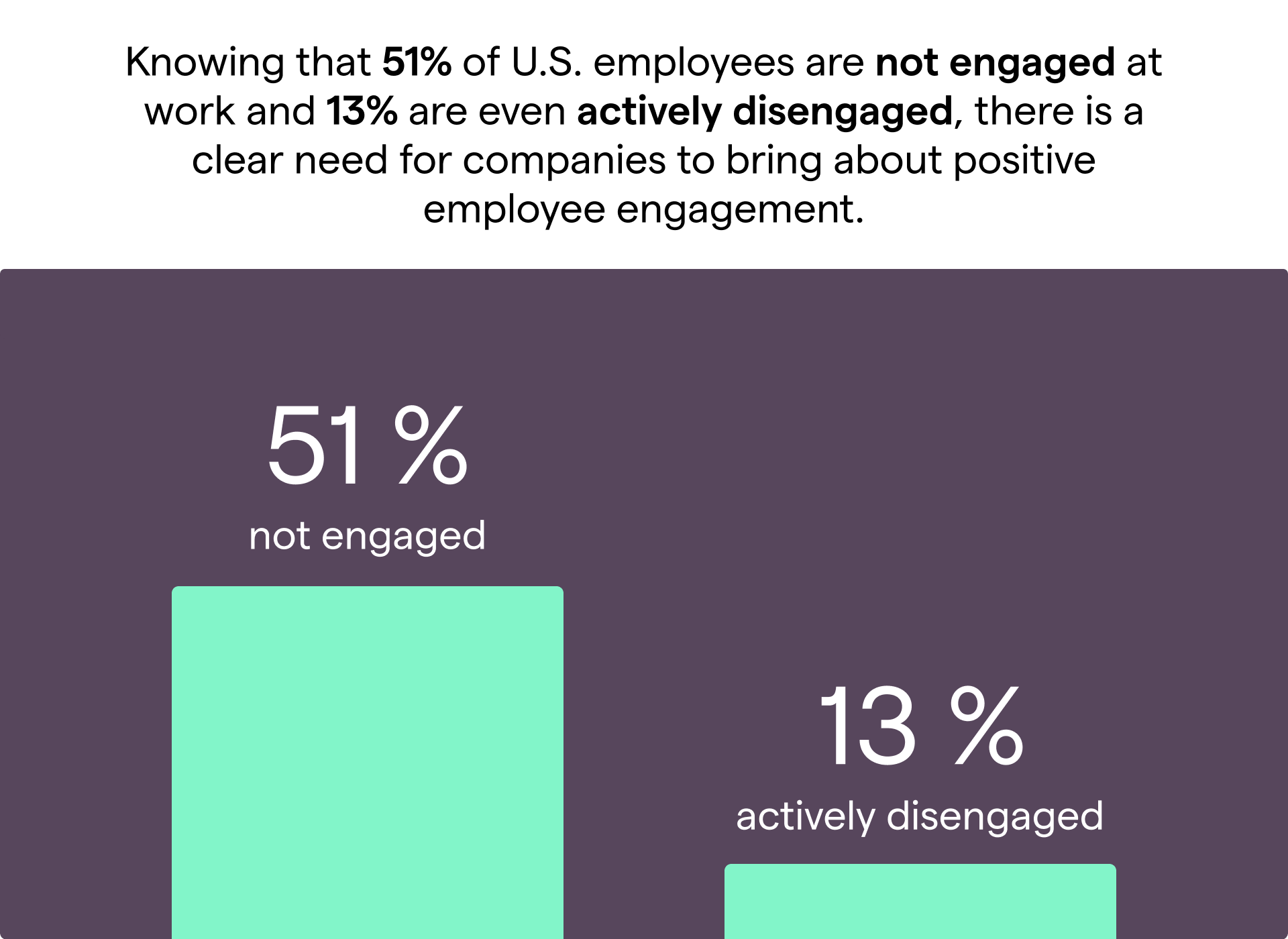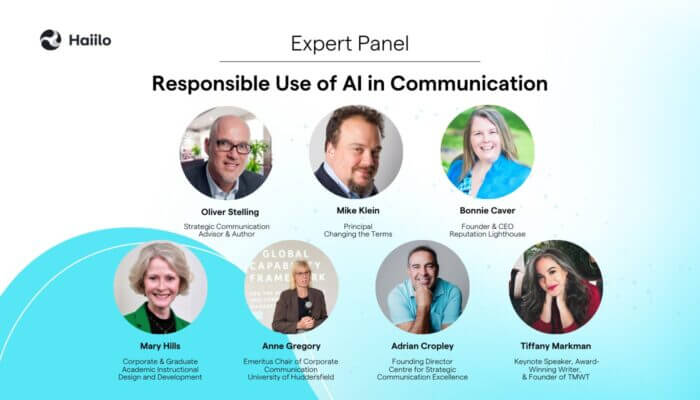Employee community is a relatively new term in the HR and business space. In our private lives, however, people have been a part of communities for a while. Most people are members of a certain social media group, forum, or a similar online community where they connect with their peers with similar interests.
The same can (and should) be replicated in workplaces. Employers need to invest more resources into building and managing virtual spaces where employees can connect with each other, collaborate, and share their thoughts, needs, and opinions. They need to be more transparent and leverage the power of the latest workplace technology to build a positive workplace culture and improve employee experience.
So let’s get started with everything you need to know about employee communities.
Employee Community Defined
Before we dig deeper into how and why to build an engaging employee community, let’s first define it.
There is no single accepted definition, but here is our own:
“Employee community is a virtual social-media-like place where employees come together to connect, communicate, and collaborate with each other. It serves as a single hub for employees to access information, share knowledge, ask questions, provide feedback, find documents, and collaborate with peers. It streamlines internal communications, strengthens relationships between employees, and provides quick access to the resources they need. Simply put, employee community is a digital home for your workforce.”
Build your employee community with Haiilo employee communications tools!
Why Building an Employee Community Matters
Building and nurturing employee communities have many benefits. They are particularly valuable for remote and hybrid workplaces where employees may not have a chance to connect with their co-workers in person.
Here are the main reasons why every company should build an internal employee community.
Builds a positive workplace culture
Today’s organizations are tasked with creating enjoyable workplace cultures that employees want to be a part of. And one of the most important building blocks of every organizational culture are workplace relationships.
When employees feel connected with one another, they are more likely to form relationships and be more satisfied with their work life.
Improves engagement
Employee communities can also help increase employee motivation and engagement in the workplace. When employees are disconnected from their peers and managers, they tend to be less motivated to do their jobs and perform well.
Results show when employees develop a sense of belonging, they are more engaged at work. On the other hand 40% of people say that they feel isolated at work, resulting in lower organizational commitment and engagement.

Enhances collaboration
One of the biggest benefits of creating engaging employee communities is better team communication and collaboration.
Today, employees participate in collaborative work more than ever before. For example, marketers need to collaborate efficiently with sales, product, and customer support teams regularly.
When there is a sense of community in the workplace, collaboration strives!
Boosts innovation and knowledge sharing
When employees collaborate easily, they are also more likely to share knowledge efficiently. And knowledge sharing is one of the most important prerequisites for boosting ideation and innovation in the workplace.
Furthermore, employee communities with properly organized knowledge hubs and readily accessible content make it easier for employees to find the information they need to do their jobs and be successful.
Increases productivity
Your employee community should also serve as a productivity booster. For example, the community should be a central palace where employees find relevant information every day.
If you want to make sure that employees join and stay in your community, make sure that the information they receive is tailored to their job functions, interests, preferences, and other criteria.
Furthermore, your employee community can have a significant impact on forming positive work relationships which can result in higher productivity. Gallup research found that 30% of employees say they have a best friend at work. That percentage of workers is reportedly seven times as likely to be engaged with their jobs and produce higher-quality work.

Decreases turnover
Peer relationships can also have a big impact on employee retention. A study conducted by Workforce found that 62% of employees who had 1 to 5 close friends at work said they would reject another job offer. That number increases to 70% for employees who have 6 to 25 close work friends.
What It Takes to Build a Thriving Employee Community
Creating and nurturing an engaged employee community takes time. But don’t get discouraged, as the benefits are very rewarding.
Just follow these steps, and see how your community grows!
Implement the right technology
The very first prerequisite for implementing a proper employee community is the right technology. Social intranets are the most commonly used tools for building, managing, and nurturing online communities in the workplace.
Modern intranets are designed to enhance internal communication, connect peers, and make content and critical information accessible to everyone.
📹 Check out our masterclass: How to Overcome Communication Barriers in the Workplace
Create and organize groups and channels
Make sure that you set up designated discussions and forums that employees from various departments can join to communicate, share ideas, and work on tasks and projects.
These channels don’t have to be only work-related. Instead, consider creating a space where employees can have “water cooler” chats about their personal interests, books, family, pets, and other non-work-related topics.
The “water cooler effect” helps create and foster social bonds among employees, drives innovation, and even helps the bottom line.
Make information personalized and easily accessible
The content you create for employees in your community should be personalized. Otherwise, it is hard to grab employees’ attention. The information should also be easily accessible to everyone (even to your frontline workers who may not have a designated working desk).
When implementing technology to support your employee community, make sure that it has a:
- A powerful global search for fast results
- Wikis that are more than texts
- Departmental knowledge hubs
- Documents & content management functionalities
Leverage user-generated content
In most organizations, HR and internal communications functions are the ones responsible for nurturing online employee communities in their organizations. However, these functions often need help with the creation and distribution of personalized and engaging content employees want to consume.
Some don’t have access to the necessary tools to properly segment communities and make content more personalized, while others don’t have ideas about what type of content to create.
To keep an employee community engaged, focus on user-generated content. Ask your community members to cover a topic of their interest or send out a survey asking your employees what kind of content they want to consume.
💡Related: Top 5 Employee Surveys to Implement [50 Questions Included]
Include leadership
Make sure that your CEO, CFO, CMO, and other C-level executives are active community members. They should act as role models to the rest of the workplace. If they show enthusiasm about the community, the rest of the employees will as well.
You can, for example, have occasional “ask our CEO” days when employees can ask questions they usually don’t have a chance to. This is a great way to make your workplace culture more transparent and build trust in the workplace.
💡 Related: What Are the Characteristics of a Great Leader?
Encourage share of voice
Healthy online communities are the ones in which conversation goes both ways. In other words, if you just have an employee newsletter you distribute weekly or monthly, you can’t call that a community.
Employees should be able to raise their voices, share their concerns and suggestions, and express their needs.
Feedback is also critical. While some of you may first think of top-down feedback, bottom-up feedback is sometimes even more valuable. This is a great way for leaders to learn more about themselves and find new ways to keep their workforce engaged and happy.
Make it fun
Save some of the weekly working hours for fun. You can think of games, or other fun activities community members can join. You can organize company podcasts or webinars. You can set up random one-on-one calls so that employees (particularly remote employees) can get to know each other.
If you are a remote company struggling to organize in-person team-building activities, there are amazing online tools that can help you organize online team-building.
Encourage advocacy
If you have an engaged community, make sure that you leverage it to its maximum capacity. For example, you could set up an employee advocacy program to encourage brand ambassadorship.
Enable your most engaged members to be the voice of your organization and regularly share your company’s content with their own networks. Employee advocacy can go a long way in boosting your organization’s brand awareness, sales, and talent acquisition efforts.
Track engagement and activities
In order to keep your employee community engaged, you need to set up and track some engagement metrics behind it. You can track, for example, the readership of your company’s internal content.
You can track how much your content gets shared, both internally and externally. To take a step further, you could also set up some more advanced KPIs that align with your organization’s ultimate goals.










